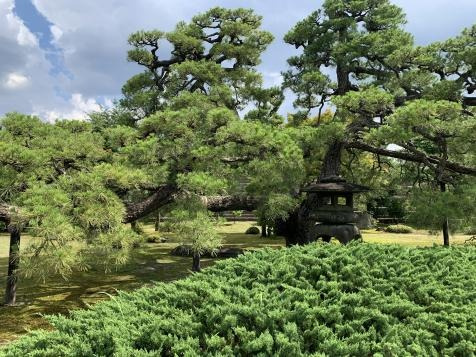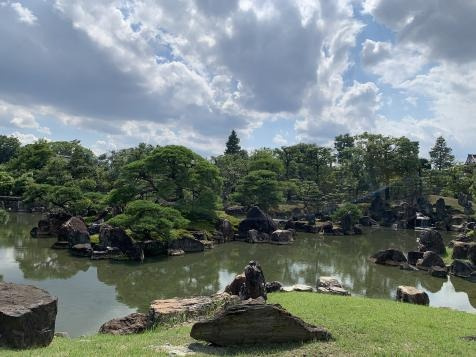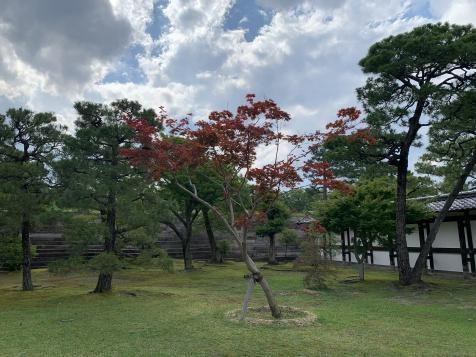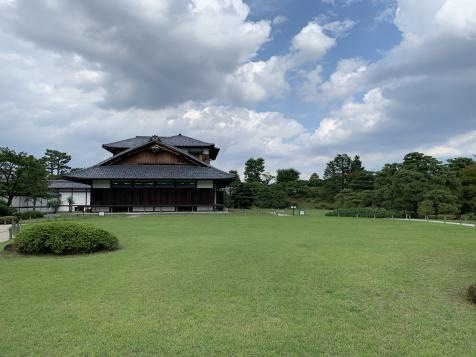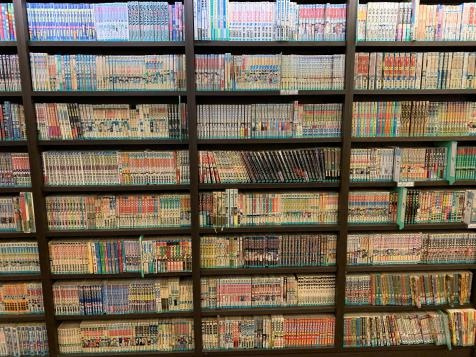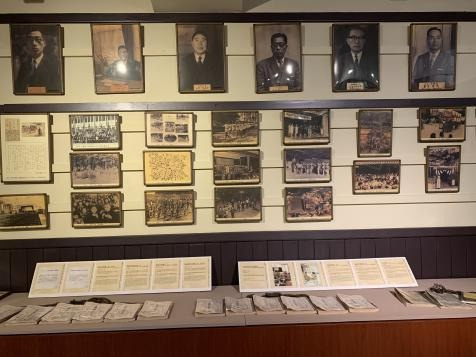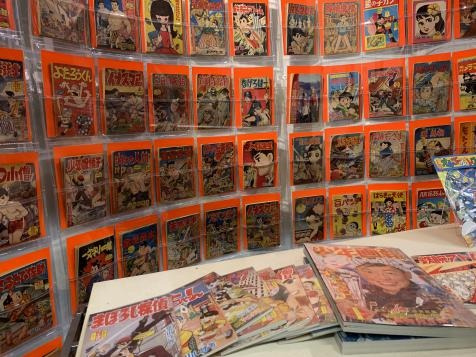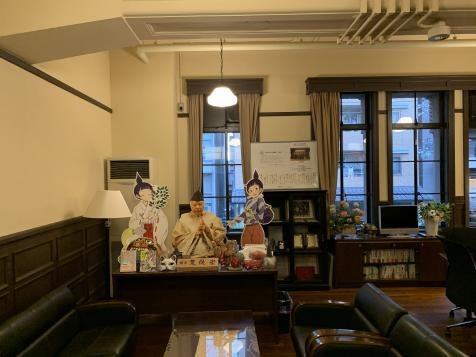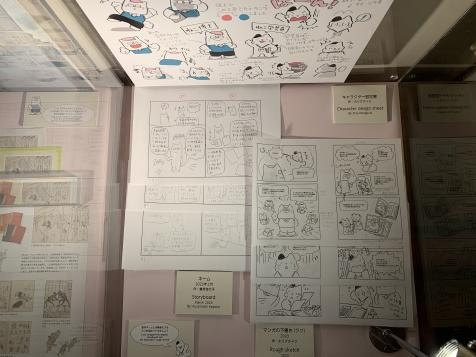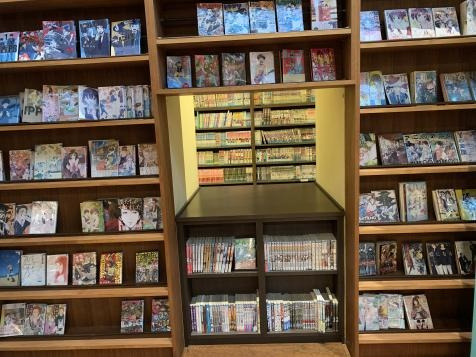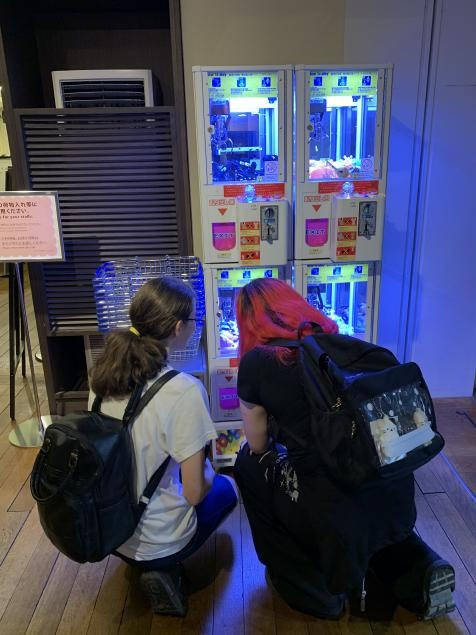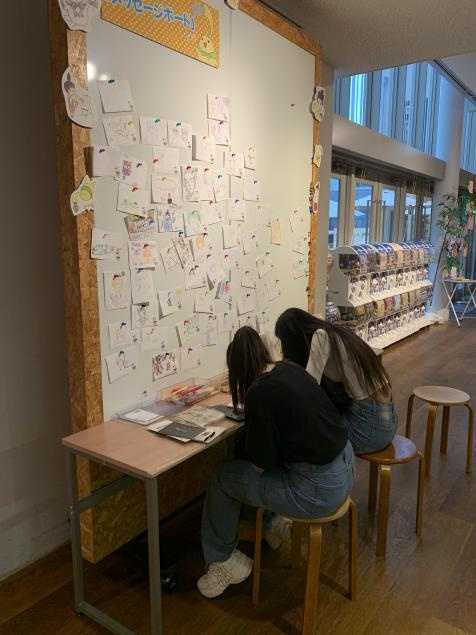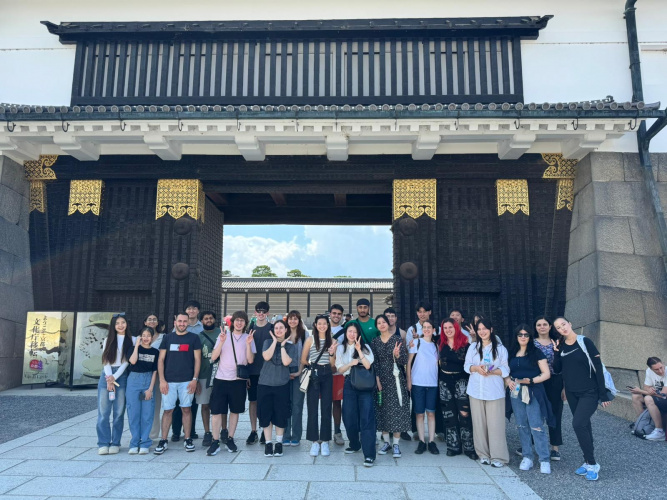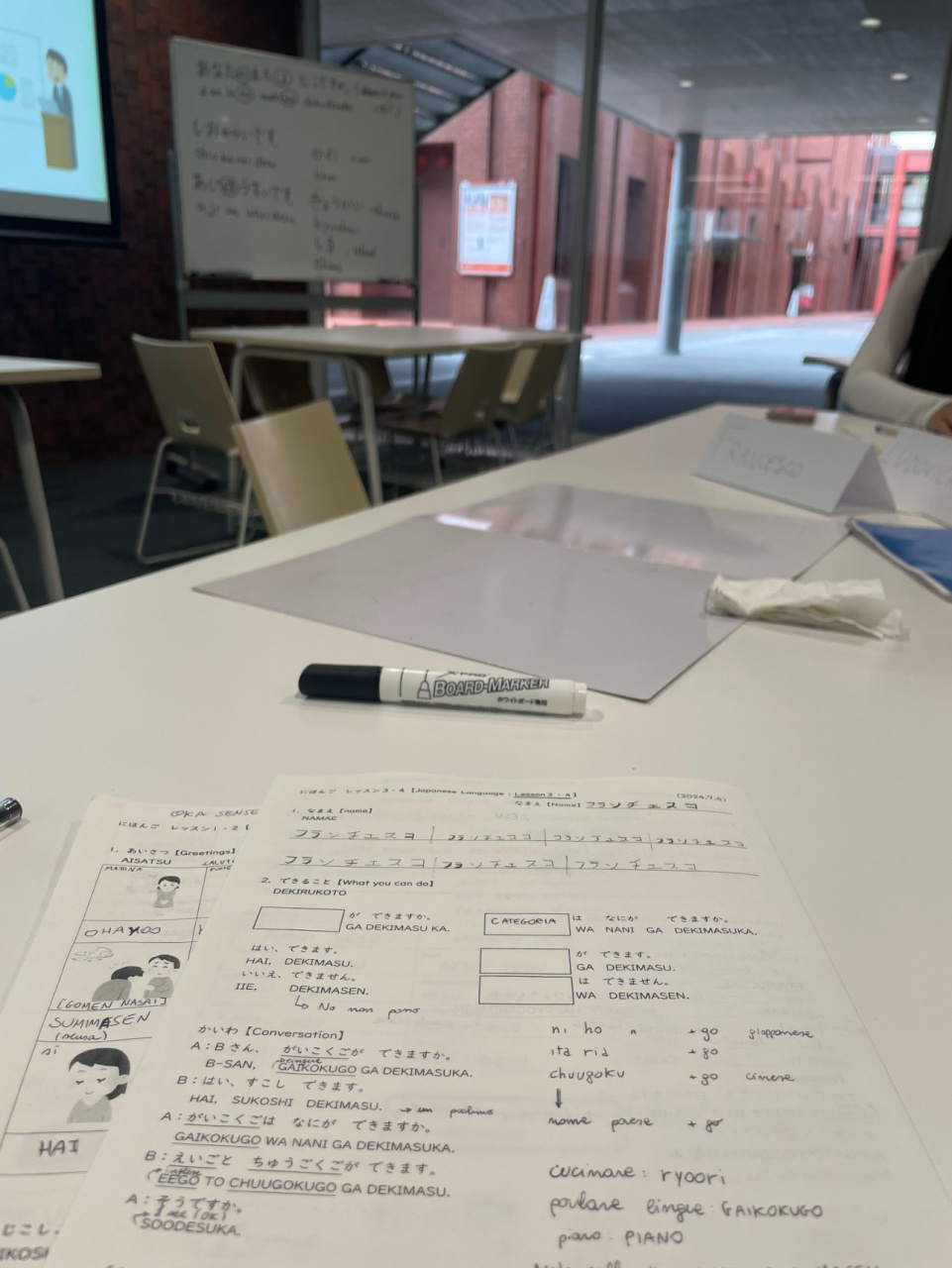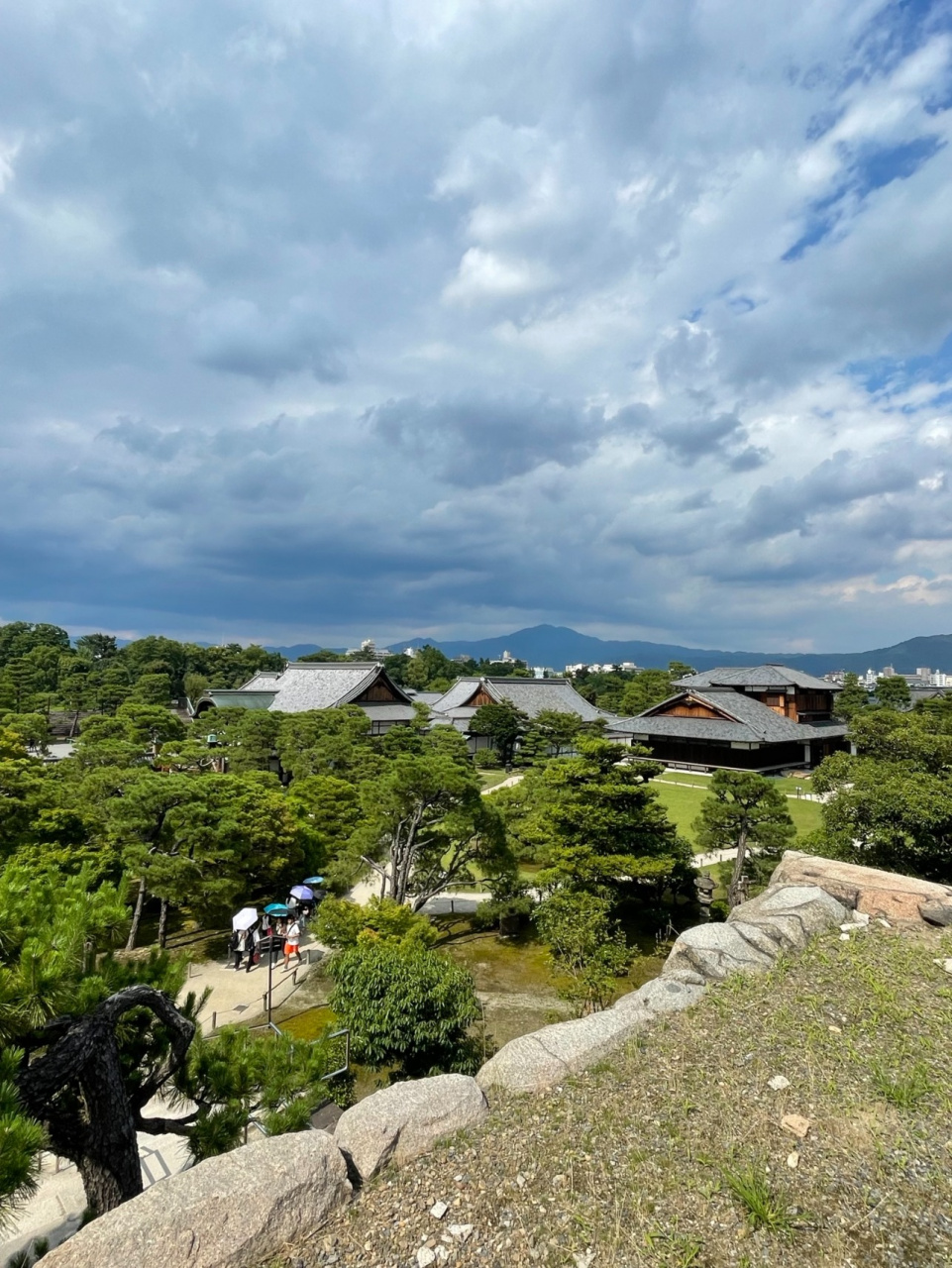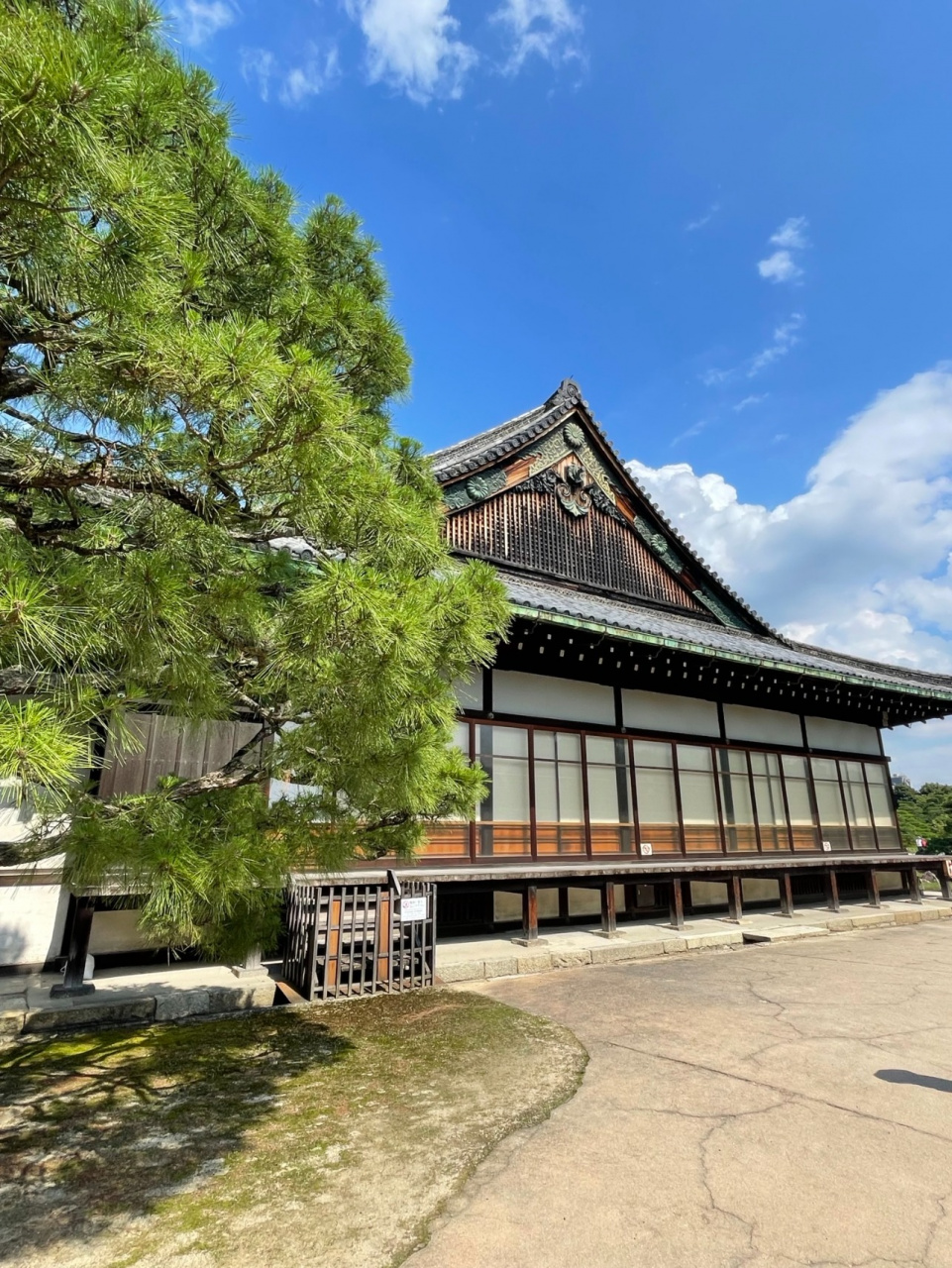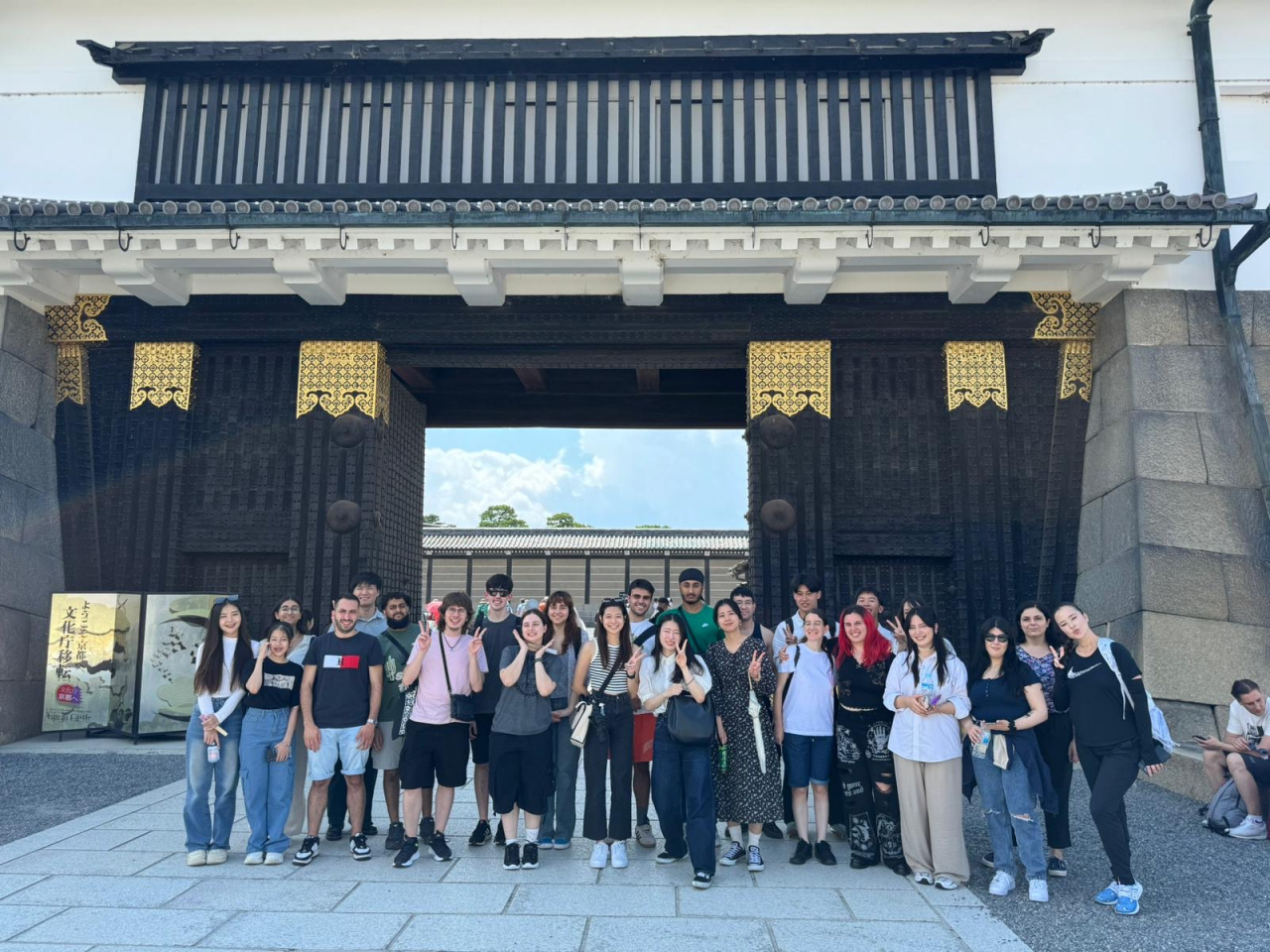2024.07.04
学生レポ3日目:R-STEPプログラム <二条城・京都国際マンガミュージアム>【R-Globe】
2024年7月2日(火)から13日(土)まで、海外協定校の学生を対象に、短期留学プログラム「R-STEP(Ryukoku Short-Term Experience Program)」を開催しています。今回は7ヶ国から19名の学生が参加。7月4日(木)プログラム3日目は、午前は龍谷大学で日本語の授業を受講し日本語を学びました。午後からは、本学のR-STEP学生バディとともにフィールドトリップで二条城、京都国際マンガミュージアムに行きました。
以下、R-STEP参加学生のレポートを紹介します。
(原文)
This morning we had the 2nd lesson of the R-Step, it was very nice and we learn more Japanese things. In the afternoon we went to Nijo castle we really enjoy the garden and walking around the castle After we went to manga museum, I finally find my childhood mangas, so I can return child for a moment, we really enjoy the day trip.
(和訳)
午前中は、R-STEPの2回目の授業を受け、更に日本について学ぶことができたのでよかったです。午後は二条城に行き、お庭やお城の周りを散歩しました。その後、マンガミュージアムに行き、ついに幼いころ読んでいたマンガを見つけることができ、子ども時代に戻ることができました。本当に楽しいフィールドトリップでした。
Ever since I was a teenager I’ve been fascinated by the Sengoku period of Japanese history (Sengoku Jidai, 1467-1568). As such, getting to visit a historical place which was built under the rule of Tokugawa Ieyasu one of the three unifiers of Japan - was very exciting and important to me. The Ninomaru-goten Palace was breath taking, both outside and inside. Its architecture (like most of Japanese architecture) is completely unlike anything I’ve ever seen, this made it especially remarkable and interesting. The inside of the palace is equally as beautiful as the outside, with a lot of attentiveness put into details - the height of the flooring to symbolise hierarchy, artwork on door panels to entertain guests, ceilings made to create illusions of space, subliminal symbols to make one feel intimidated - these are only a few of the notable details within the main palace.
The gardens (see Fig.2.1) within Nijo castle’s grounds were not only beautiful but also peaceful, with an assortment of trees and bushes, as well as a serene lake surrounded by nature. Strolling through the gardens provided me with a sense of calm and happiness, it was very pleasant and I wish we could’ve stayed longer.
Manga has been a big part of my life ever since childhood. From my very first volume of Neon Genesis Evangelion to my most recently bought volume of Jujutsu Kaisen, manga has accompanied my development, from early childhood to adulthood - acting both as a means of entertainment and an introduction to a lot of complex themes worthy of introspection - leading it to become a building block of my personality. Seeing so many manga in a single place made me realise just how culturally rich it actually is. Although one might be inclined to believe it’s a recent form of art, that notion is clearly erroneous seeing as the founding work upon which modern manga is derived was published as early as in the 12th century. The first floor of the museum held a manga exhibition displaying works spanning an entire century, notable works such as Astro Boy (1952) - which influenced one of my favorite manga ever, Pluto (2003) by Naoki Urasawa - Berserk (1988) which is a masterpiece of storytelling, Naruto (1999) whose influence spans several generations to the point of becoming a corner stone of pop culture all over the world.
Another interesting aspect of the museum is the fact it is housed within the Showa era building of the former Tatsuike Elementary School - established solely through monetary donations of local residents, it symbolises the people’s faith and hope in education. [2] The historical appearance of the building remains intact and there are a few rooms (which are former classrooms) explaining its history, origins, and importance to the locals.
In addition to the cultural and historical significance of the Kyoto International Manga Museum, it also allows its visitants to (i) purchase several souvenirs, (ii) have their picture drawn in manga style, (iii) test their luck with gachapon and claw machines (see Fig.3.3b), (iv) contribute with their own art (see Fig.3.3a), and (v) leisurely read any of the manga found within the museum grounds.
10代の頃から、私は日本の歴史における戦国時代(1467-1568)に魅了されてきました。そのため、日本三大天下統一者の一人である徳川家康の統治下に建てられた歴史的な場所を訪れることは、私にとってとても刺激的で、重要なことでした。二の丸御殿は、外側も内側も息をのむような美しさでした。その建築は、私がこれまで見たことのないものでした。(日本の建築のほとんどがそうであるように)特に目を見張るものがあり、興味深かったです。二の丸御殿の内部も、外観に劣らず美しく、細部にまで気を配っていました。ヒエラルキーを象徴する床の高さ、ゲストをもてなすドアパネルのアートワーク、空間を錯覚させる天井、威圧感を与えるサブリミナル・シンボルなど、これらは本宮内の注目すべきディテールのほんの一部に過ぎないです。そして、庭園は自然に囲まれ、美しいだけでなく平和に満ち溢れていました。庭園を散策していると、穏やかで幸せな気持ちになり、もっと長く滞在したかったです。
マンガミュージアムについて。
マンガは子供の頃から私の人生の大きな部分を占めてきました。初めて読んだ『新世紀エヴァンゲリオン』から、最近買った『呪術廻戦』まで、マンガは幼児期から成人期まで私の成長とともにあり、娯楽の手段であると同時に、内省に値する複雑なテーマを数多く知るきっかけとなり、私の人格を形成する要素となっていました。マンガは最近の芸術の一形態だと思われがちですが、現代のマンガの原型となった作品が12世紀には発表されていたので、その考えは明らかに間違っているといえます。美術館の1階では、1世紀にわたる作品が展示されたマンガ展が開催されていました。代表的な作品としては、鉄腕アトム(1952年)~私の好きなマンガのひとつ、浦沢直樹の『プルート』(2003年)に影響を与えた~や、ストーリーテリングの傑作であるベルセルク(1988年)などがあります。『NARUTO-ナルト-』(1999年)は、数世代にわたって影響を与え、世界中のポップカルチャーの礎となりました。
このミュージアムのもうひとつの興味深い点は、旧立池小学校の昭和時代の校舎を利用していることでした。建物の歴史的な外観はそのままで、地元の人々にとって歴史、起源、重要性を説明する部屋(元教室)がいくつかあります。京都国際マンガミュージアムの文化的・歴史的意義に加え、来館者は、お土産を買う、マンガ風に絵を描いてもらう、ガチャポンやクレーンゲームで運試しをする、自分の絵を投稿する、ミュージアム内にあるマンガをゆっくり読むことができるといった経験ができます。
